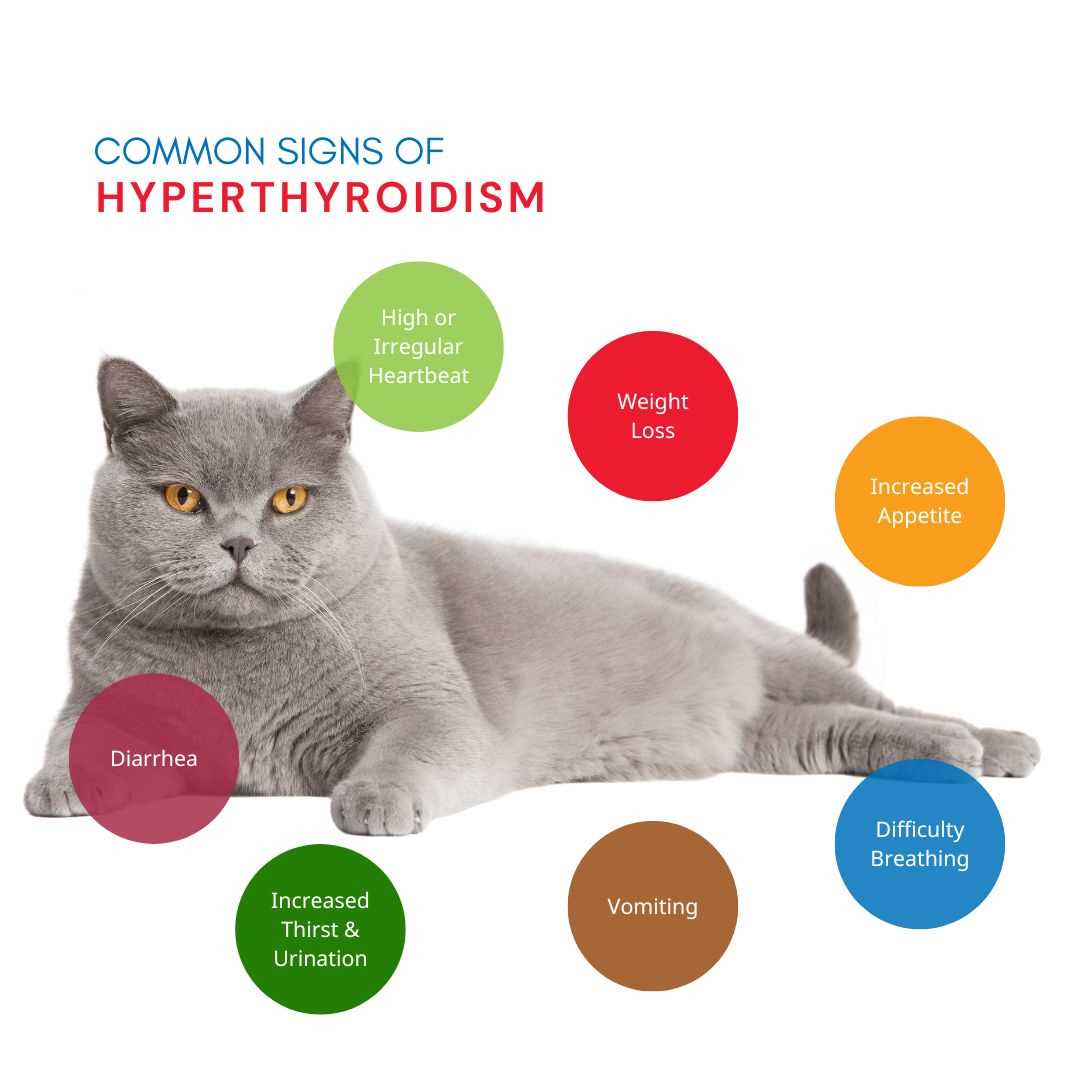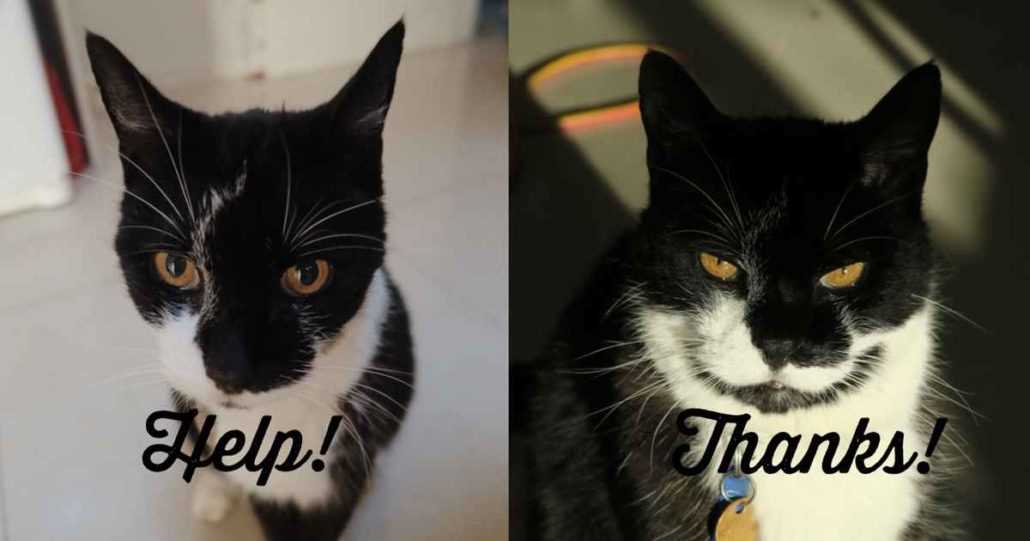Regular veterinary check-ups are fundamental for monitoring thyroid levels in older pets. If signs of increased appetite, weight loss, or hyperactivity appear, immediate testing is advisable. Blood tests can confirm the diagnosis and guide treatment options.
Medications such as methimazole are often prescribed to inhibit excessive hormone production. This oral medication requires consistent dosing and monitoring for potential side effects, such as vomiting or lethargy. Regular follow-ups ensure that dosage adjustments can be made based on the pet’s response.
Another option involves radioactive iodine therapy, which targets overactive thyroid tissue. This procedure is highly effective and often results in a permanent solution, though it requires specialized facilities and may necessitate a short hospital stay.
For some, dietary management can be beneficial. Prescription diets formulated to limit iodine intake can help manage hormone levels. This approach should be closely monitored by a veterinarian to assess its effectiveness and ensure nutritional needs are met.
Each method has its own advantages and potential drawbacks; thus, a thorough discussion with a veterinary professional is key to determining the best course of action tailored to individual health needs.
Understanding the Symptoms of Hyperthyroidism in Cats

Weight loss despite a good appetite is a significant indicator. When I started noticing my food bowl emptying faster but my body shrinking, it raised alarms. Increased thirst and frequent urination often accompany this condition. If the litter box seems busier than usual, it’s worth investigating further.
Hyperactivity or restlessness can be another sign. If a normally calm feline suddenly becomes a whirlwind of energy, it might be related. Also, pay attention to grooming habits. A decline in grooming can lead to a scruffy appearance; my fur definitely looked less polished during that time.
Additional Symptoms
Changes in behavior, such as irritability or vocalization, can be subtle yet revealing. If I started to meow more than usual or seemed more sensitive to touch, it could indicate an underlying issue. Heart problems, like increased heart rate, may also arise, often unnoticed without a vet’s checkup.
Monitoring overall health is crucial. Keeping track of dietary needs is important, especially for older felines. Exploring the best pet food for older cats can greatly support well-being. If any of these symptoms appear, consulting a vet for a thorough evaluation is advisable.
Diagnostic tests for confirming hyperthyroidism
Blood tests are crucial for establishing the diagnosis. A total T4 test is the primary method used to measure thyroid hormone levels. Elevated T4 levels indicate potential thyroid dysfunction.
Additional tests may include:
- Free T4 test: This evaluates the unbound form of the hormone, providing a clearer picture of thyroid function.
- TSH test: Measuring thyroid-stimulating hormone can help differentiate between primary and secondary causes of thyroid issues.
- Complete blood count (CBC) and biochemical profile: These tests assess overall health and can reveal concurrent conditions that may complicate treatment.
Imaging techniques like ultrasound may be utilized to visualize the thyroid gland and check for nodules or abnormalities, aiding in the assessment of the condition.
Regular monitoring of thyroid hormone levels post-diagnosis is essential to evaluate treatment response and adjust therapies accordingly.
Medications commonly used for treatment
In managing this condition, several medications are prescribed to help regulate thyroid hormone production. The most frequently used drugs include Methimazole, which inhibits thyroid hormone synthesis, and is available in both tablet and transdermal forms. Dosage adjustments may be necessary based on individual response and side effects.
Another option is Carbimazole, a prodrug that converts to Methimazole in the body, offering similar effects. It is also important to monitor liver function, as some felines may experience hepatotoxicity with prolonged use of these medications.
| Medication | Form | Common Side Effects |
|---|---|---|
| Methimazole | Tablet, Transdermal | Vomiting, Loss of appetite, Lethargy |
| Carbimazole | Tablet | Skin reactions, Liver dysfunction |
Radioactive iodine therapy represents a more permanent solution, but it requires specialized facilities and may involve a higher initial cost. This method effectively destroys overactive thyroid tissue without affecting surrounding structures.
Regular veterinary check-ups are crucial to monitor hormone levels and adjust medications accordingly. This proactive approach ensures that any adverse effects are addressed promptly, maintaining overall health.
Dietary adjustments to support treatment

Incorporating a low-iodine diet plays a significant role in managing thyroid conditions. This dietary change can help reduce the production of thyroid hormones. Specialized commercial diets are available, formulated specifically for this purpose. Always consult a veterinarian before making any changes.
Including high-quality protein sources is beneficial. Lean meats or fish can support overall health and maintain muscle mass during treatment. Opt for easily digestible options to minimize gastrointestinal issues.
Monitoring calorie intake is crucial. Weight management helps prevent obesity, which can complicate health issues. Regular weigh-ins and portion control can assist in maintaining a healthy weight.
Hydration cannot be overlooked. Fresh water should be available at all times. Some pets enjoy wet food, which can contribute to their daily fluid intake, making it a good alternative.
Adding omega-3 fatty acids can provide anti-inflammatory benefits. Fish oil supplements can be considered, but consult with a veterinarian for appropriate dosages.
Regularly reassessing dietary preferences and health status ensures that nutritional needs are met effectively. Adjustments may be necessary as treatment progresses, so staying in touch with a veterinarian is key to success.
Radioactive iodine therapy: What to expect
After the decision is made for radioactive iodine treatment, the first step is a thorough assessment of health to ensure safety during the process. The procedure involves a single injection of iodine-131, targeting the hyperactive thyroid tissue. This treatment is non-invasive and typically requires a stay at a veterinary facility for a few days due to radiation safety protocols.
During the hospitalization, constant monitoring is provided to assess recovery and response to the treatment. Most felines will exhibit a reduction in symptoms within a few weeks, as iodine selectively destroys the overactive thyroid cells. Regular follow-up visits are crucial to track thyroid hormone levels and ensure they return to normal ranges.
Side effects are rare but can include temporary hypothyroidism, which might require medication. It’s essential to provide a calm environment during recovery, minimizing stress, as this can impact overall healing. Maintaining communication with the veterinary team throughout the process helps address any concerns and ensures a smooth transition back home.
Overall, this treatment method boasts a high success rate, often resulting in a long-term resolution of issues related to thyroid imbalances. It’s a proactive step towards enhanced well-being and quality of life.
Monitoring and Managing Treatment Outcomes
Regular veterinary check-ups are vital to assess the effectiveness of the ongoing management plan. Aim for consultations every 3 to 6 months, allowing for adjustments as necessary.
Key Monitoring Strategies
- Blood tests should be conducted to evaluate thyroid hormone levels. Target values indicate how well the current regimen is working.
- Keep track of weight changes. Sudden fluctuations may signal the need for treatment modification.
- Observe behavior and appetite closely. Any drastic changes could indicate an adverse reaction to medication or an imbalance in health status.
Long-term Management Considerations
- Maintain a consistent medication schedule. Missing doses can lead to hormone level spikes.
- Monitor for side effects such as vomiting or lethargy. Report these to the veterinarian immediately.
- Reassess dietary choices regularly. Specialized diets can support overall health and complement therapeutic efforts.
Continuous evaluation of these factors ensures the health journey remains on track, enhancing quality of life and well-being.






